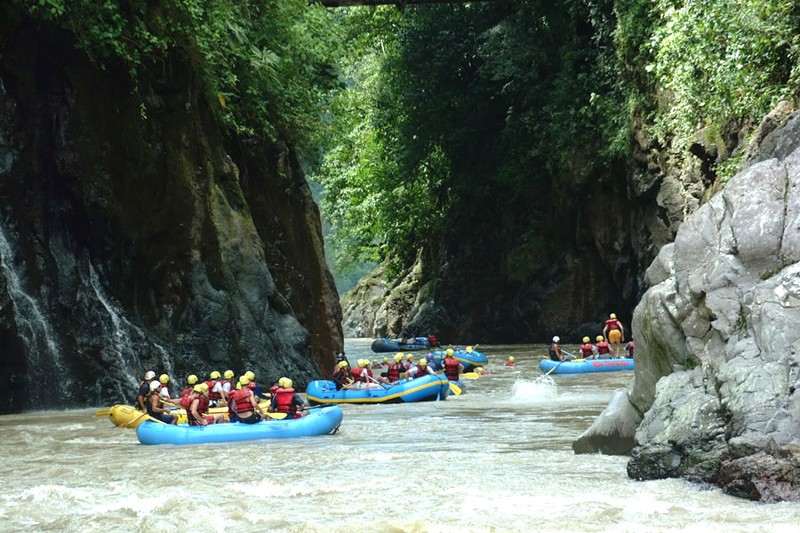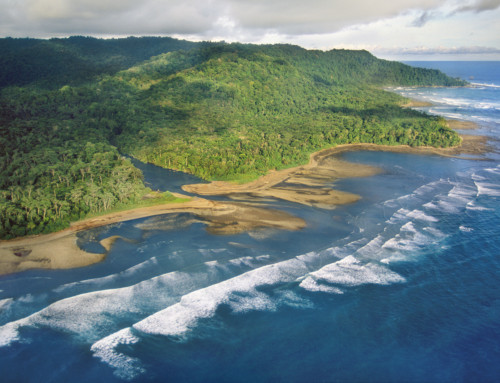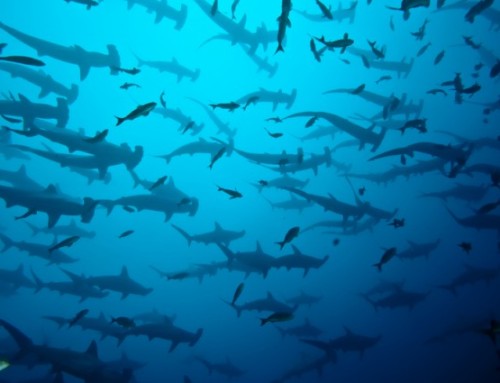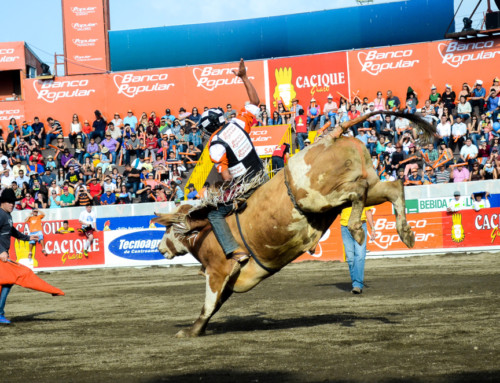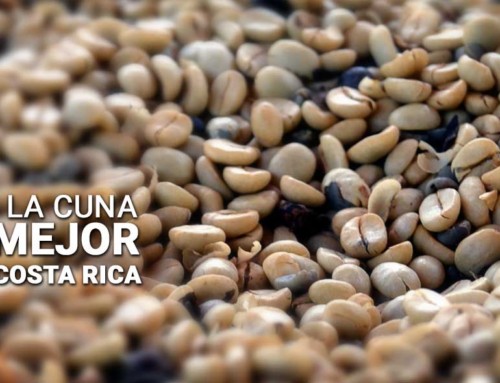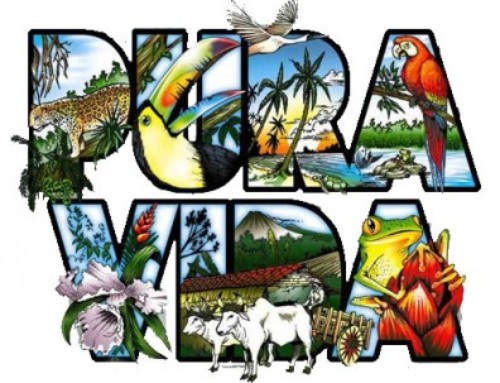White knuckle thrills and chills!
In mid 2015, after a morning spent white water rafting with his family President Luis Guillermo Solis proudly thrust a document into the air and shouted the phrase “For Costa Rica!”. The paper in question was a decree to prevent dams being built on the Pacuare and Savegre rivers for a minimum of 25 years. In passing this law President Solis became an instant hero among white water rafting fans worldwide, and, put in place measures to protect some of Costa Ricas most valuable national treasures.
White water rafting offers a truly unique way to see the kind of spectacular Costa Rican beauty spots that you would otherwise never get near and give the inspiration to visit more of some of the most beautiful destinations. Natural beauty and stunning wildlife provide the setting for intense moments of adrenaline-fueled mayhem, and with only a guide, paddle, and 5mm of PVC fabric between you and the fast flowing water, white water rafting in Costa Rica is the definition of a “good time”. Imagine the world’s best roller coaster minus the long lines and you get the picture. And, if Costa Rica isn’t quite on your travel horizon, don’t worry! You can still experience the thrill of it in the States – infact, white water rafting has been named one of the top things to do in Banner Elk NC, so you might not have to travel far at all! Who knows, maybe after trying it Costa Rica will become top of your travel list and you’ll be here in no time!
Although there is a seemingly endless array of white water rafting options in Costa Rica to choose from it pays to remember that not all sections, bumps, coves, and corners were created equal. Check out Nomad Americas top white water rafting picks.
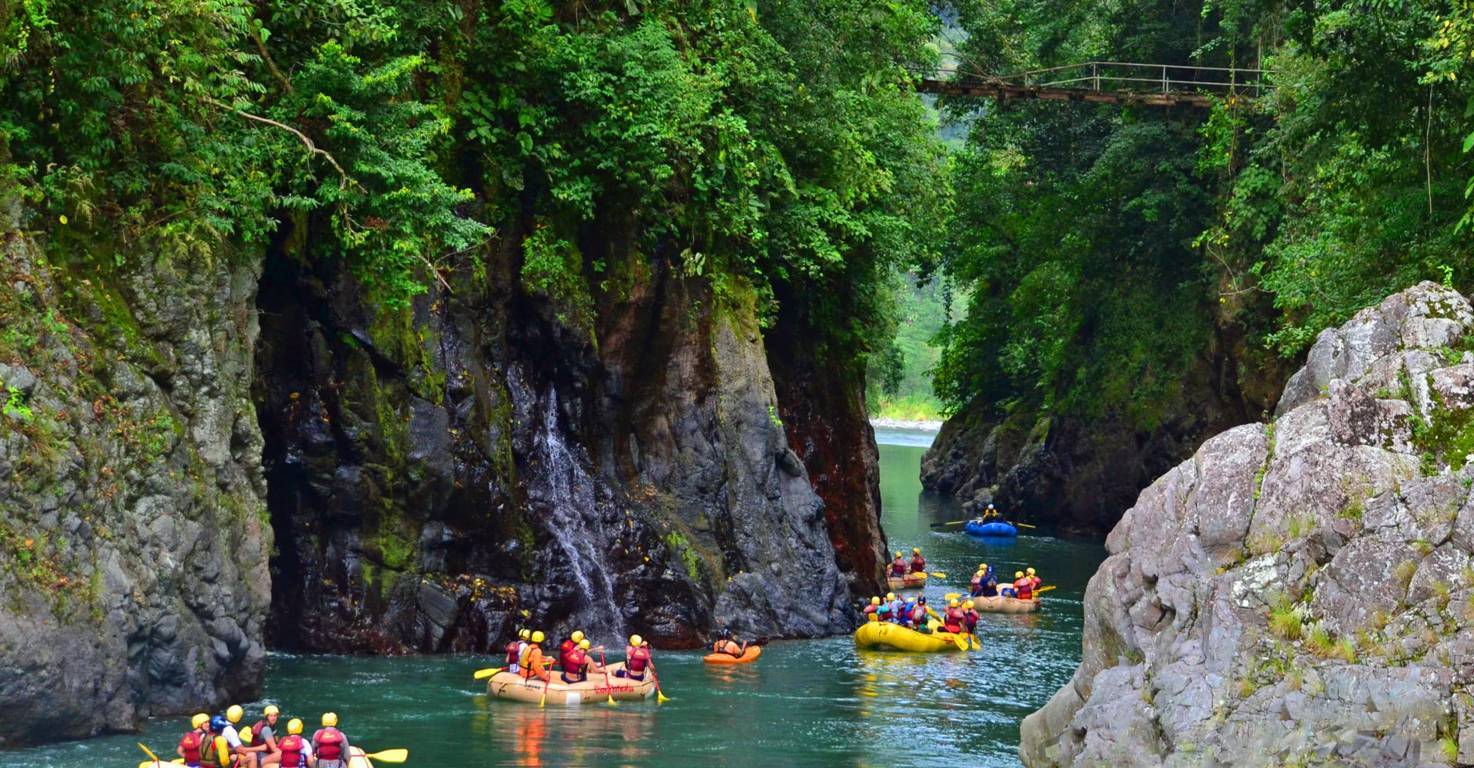
San Jose/Turrialba/Cartago – Pacuare River – Reventazon River
Costa Rica’s capital city is close to the Pacuare River and the Reventazon river, and serves as the launch pad for some of the most famed white water rafting routes on the planet. Set in the twisting canyons of the Talamanca mountains, not only do the 29km Pacuare river runs bypass incredible scenery, but also take rafters on some of the most hair raising trips the industry has to offer. Once experienced you’ll understand why Frommer’s has ranked the 52 categorized rapids in this area one of the “Top 10 Whitewater River Rafting Destinations in the World.” Running parallel to the Pacuare, the Reventazon River’s 10 miles of fast flowing rapids provides thrills on par with it’s more famed cousin. Due to it’s mellower class II and III runs through lowland forest, peaceful swimming oases, and stunning scenery the Sarapiqui River is a great option for families.
Easy entry points into the Class III, IV and V rapids of the Rentazon river form the perfect testing ground for everyone from beginners to whitewater junkies looking to test their skills. In addition to some bone jarring river action these routes traverse reserves that many visitors would otherwise never have the chance to see. Regardless of your chosen river it’s pretty much guaranteed that you’ll encounter some cool local wildlife and some amazing canyons to swim through.
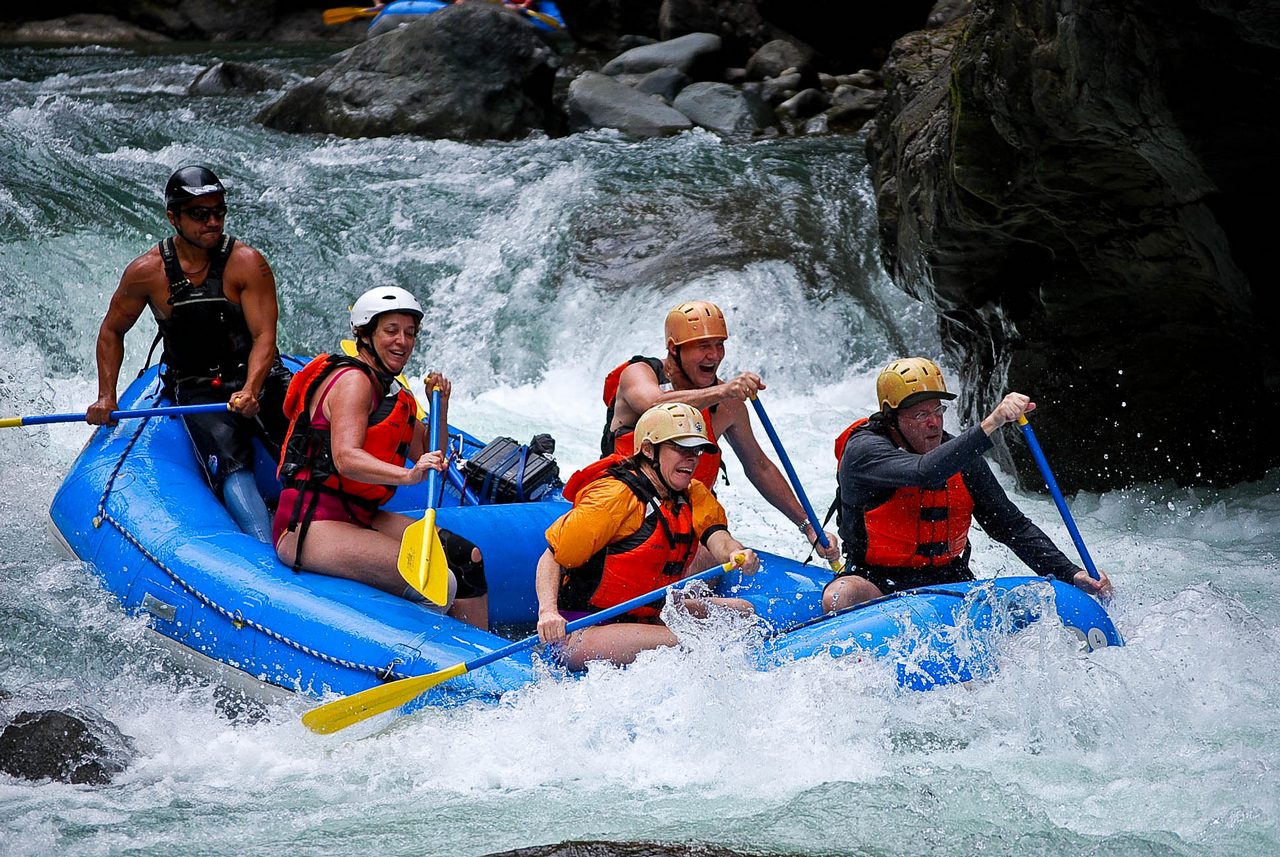
Alajuela
The Toro river rages through Alajuela province and Arenal National Park and is one of Costa Rica’s biggest draws for adventure seeking tourists. The Class II to IV rafting routes take in 13 km of continuous whitewater complete with rainforests, waterfalls, pineapple and papaya plantations, big waves, unparalleled scenery and much more. Additionally, these waters bypass an infamous section of river that is home to “The Terminator” and “Dos Locos” rapids, the names of which speak for themselves.
Puntarenas
What the rapids in Puntarenas lack in white-knuckle gnarlyness is offset by the untouched beauty of the primary rainforests that the journey takes in. The Class II and III routes are often the go-to destination for families. Keep your eyes peeled for monkeys, toucans, ospreys and much more of the vibrant wildlife often sighted along the route.
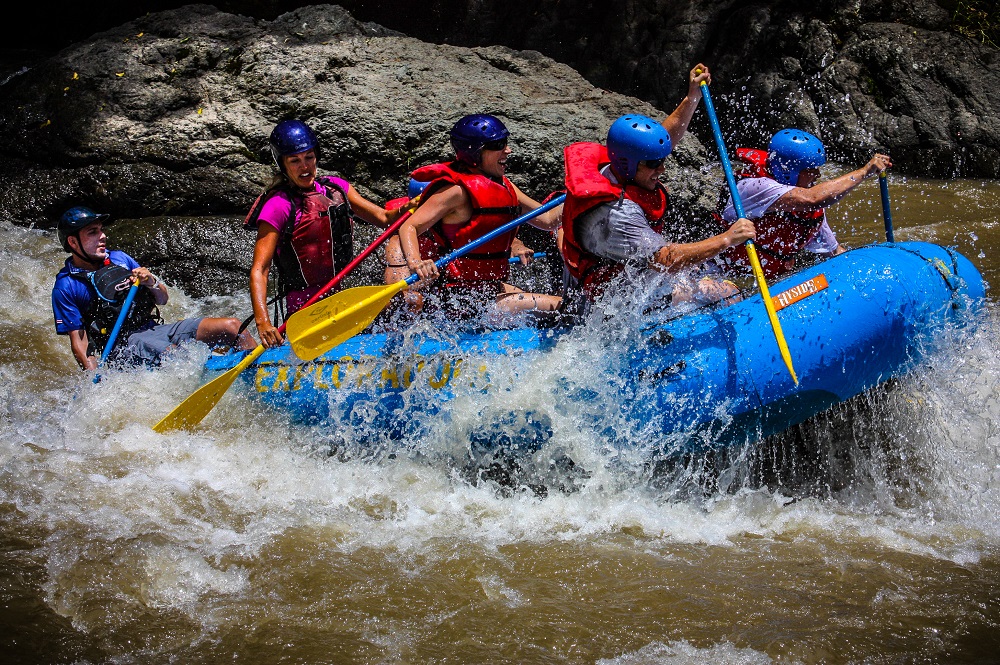
TOP WHITEWATER RAFTING SAFETY TIPS
1. Go with the professionals
With so many operators things can get confusing when choosing which of them is best qualified. Inquire how long they have been in business, what training their guides have received and who oversees their training protocols and permits. We recommend Rios Tropicales which have over 30 years of experience in Costa Rica – let them know Nomad America sent you and get a 15% discount or contact us and we will book it for you to get the discount.
2. Wear a helmet
In the ongoing battle between rocks and human skulls rocks have yet to lose. Protect your noggin regardless of the level of rafting your doing.
3. Always wear a flotation device
After hitting a bump, tumbling off the raft and being held underwater unable to differentiate between up and down the phrase “life jackets are for wimps” might not seem as smart as when you boarded. Ensure to find one that fits and make certain it’s loose enough to breathe but tight enough so it wont be pulled over your head.
4. Hold the paddle properly
This one is huge, and if your guide doesn’t cover this in his pre trip-speech then run for the hills. Many people assume the most dangerous aspect of white water rafting to be the water itself – they’re wrong! Most injuries occur from getting smacked by a rogue paddle. Paddles are tough, and the combination of hard plastic and roller coaster maneuvers are a recipe for blacked eyes and lost teeth if not handled correctly. Ensure one hand is ALWAYS on the T-grip and one hand on the shaft
5. “Never get out of the boat”
After a day on the rapids the word “Bump” will be grafted into your memory. This common code word means your heading for something ( a rock, a stopper wave, a waterfall ) that may throw you overboard if unprepared. The “bump” drill specifics are beyond the scope of this article but your guide should cover it. If you do happen to get dumped over board then the single most important thing to do is DON’T PANIC! Often you’ll emerge right next to the raft and can be hauled back in. Sometimes you’ll pop up a few feet away and might have to swim a little. On rare occasions the previous options are unavailable in which case either look to see if another boat is coming up behind you, or start swimming for the nearest river bank. Your guide should cover this before you depart.
6. Don’t forget the bells and whistles
In early Spring the water isn’t as warm as it looks. A light splash jacket or wet suit will allow you to enjoy the thrill without the chill. Often these are provided by the tour company but check in advance. Opposingly, sunburn happens rapidly at higher elevations. Don’t forget to apply sunscreen.
7. Know the proper swimming techniques
The “down river swimmers position” is the tried and tested method of keeping your bones in one piece should you find yourself in the river. The involves floating on your back, feet pointed downstream, knees bent, nose and toes to the sky, with your butt up as high as you can get it. This allows your legs to absorb the shock from any incoming rocks. Should your legs miss the rock then the second likely point of contact is your butt, hence keeping is as high as possible to prevent a smashed tailbone….Ouch!
8. Pay attention when your guide explains “High-Siding”
An overturned raft is not a situation you will likely find yourself in but is one you should know how to avoid. If a boat hits a rock or stopper wave it may end up traveling sideways downstream. This causes a water pressure build up in parts of the hull not designed to withstand it, and before you can say “we should have moved quicker when the guide called ‘high side'” you and your whole crew will be bobbing around thinking “we’re supposed to be on that thing” as your unmanned boat shoots off downstream. All of this can be avoided by simply listening beforehand as the guide explains how to remedy the situation before it’s too late, so pay attention!
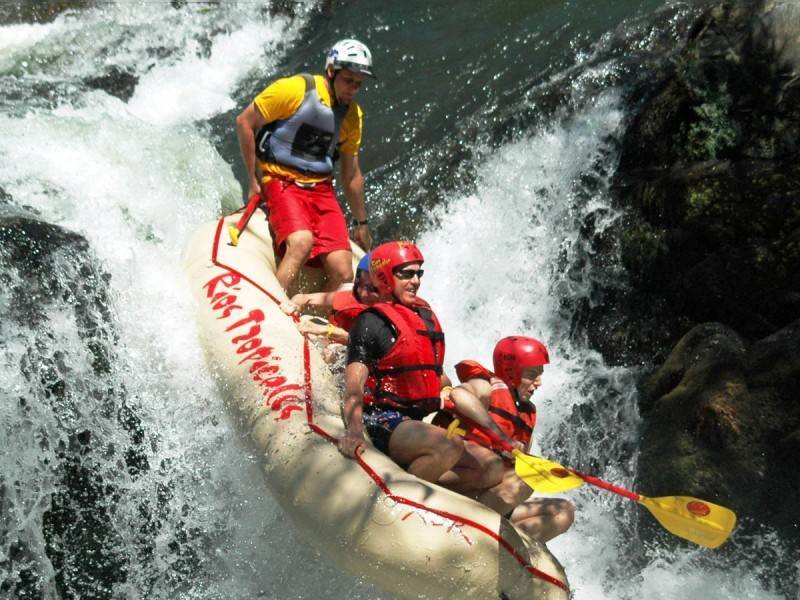
Nomad America recommendations for Rafting in Costa Rica
What Should I bring on my Costa Rica Rafting Trip?
Hover over for a full list of items to bring on your rafting trip in Costa RicaWhat Should I bring on my Costa Rica Rafting Trip?
- Lots of Energy!
- Closed shoes that can get wet (Tennis shoes, water booties, strap on sandals, Tevas)
- Swimsuit or shorts prefferably – no problem if you wear long pants.
- Warm clothes for a change when you finish
- Water-resistant sunscreen
- Straps if you wear glasses
- Sun visor/hat
- Dry pair of shoes
- Towel (sometimes provided by company)
- Eat a good breakfast for a long day on the water 🙂
River Suggestions by Region
- San Jose/Central Valley area White Water Rafting: Pacuare River
- Arenal area White Water Rafting: Balsa River and Sarapiqui River
- Guanacaste Area White Water Rafting: Tenorio River and Corobici River
- Manuel Antonio area White Water Rafting: Naranjo River and Savegre River

